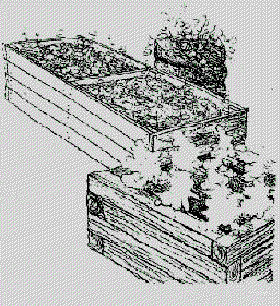Outdoor Substitutes for the Physically Disabled
The outdoors can often be tricky and a challenging experience for the physically disabled. Trips to the zoo or a botanical garden offer a soothing retreat, but that can be interrupted by crowds or inconvenient areas, as well as the fact that these day trips can be costly. Take some features from these activities and incorporate them into your home instead, and create an alternative right in your own backyard!
 Creating a delightful garden in your own home is a wonderful and rewarding experience. This process can be as simple or as challenging as you choose. It can include statues or fountains, or it can be a sunny place with your favorite flowers to just sit and enjoy a good book. By creating a tranquil and relaxing spot in your own home, it will be a constant source of enjoyment, as well as a delight to all your guests!
Creating a delightful garden in your own home is a wonderful and rewarding experience. This process can be as simple or as challenging as you choose. It can include statues or fountains, or it can be a sunny place with your favorite flowers to just sit and enjoy a good book. By creating a tranquil and relaxing spot in your own home, it will be a constant source of enjoyment, as well as a delight to all your guests!
First, when creating a garden escape, you need to make it accessible. Make it easy to go from indoors to outside, and vice versa. The easier it is for your maneuver, then the more often you will want to spend time there. By completing a few minor home adjustments, you can greatly improve maneuverability in your home.
Entering & Exiting
Although the basic doors for entering and exiting a home may be handicap accessible, what about the door to the patio or deck? Is this an entrance that is friendly for a physically disabled person to come and go?
Consider putting in a new door, or making modifications to the current one to allow a wheel chair or walker to fit through. These changes are often inexpensive, but will provide you with a wealth of outdoor enjoyment and relaxation.
Consider these important facts about doorways:
- Doors should be a minimum of 32” wide, although 36” is preferable
- There should be a 18” to 24” clear pathway on the pull side of the door
- Make sure there is smooth, slip resistant traction.
- Have hand rails on either side of the entrance
- Include a conveniently located outdoor light switch
Adding Ramps and Paths
After you have finished making the outside area accessible, think about ways you improve upon the outside itself! We have come up with some helpful ideas for you to consider when it comes to your outside landscape!
- Replace steps and stairs with ramps or smooth pathways if possible
- Re-grade or surface bumpy or steep ramps
- Add handrails to pathways
- Add benches or seats for resting spots
- Add curbs to paths and ramps for safety
If you have limited financial availability, these changes can occur gradually. It is not necessary to reach every corner all at once. Sitting on Deck or Patio is still a relaxing and wonderful opportunity to observe nature and enjoy the soothing outdoors. Never let a disability hinder you life!
Back: Therapeutic Gardening, an Introduction
